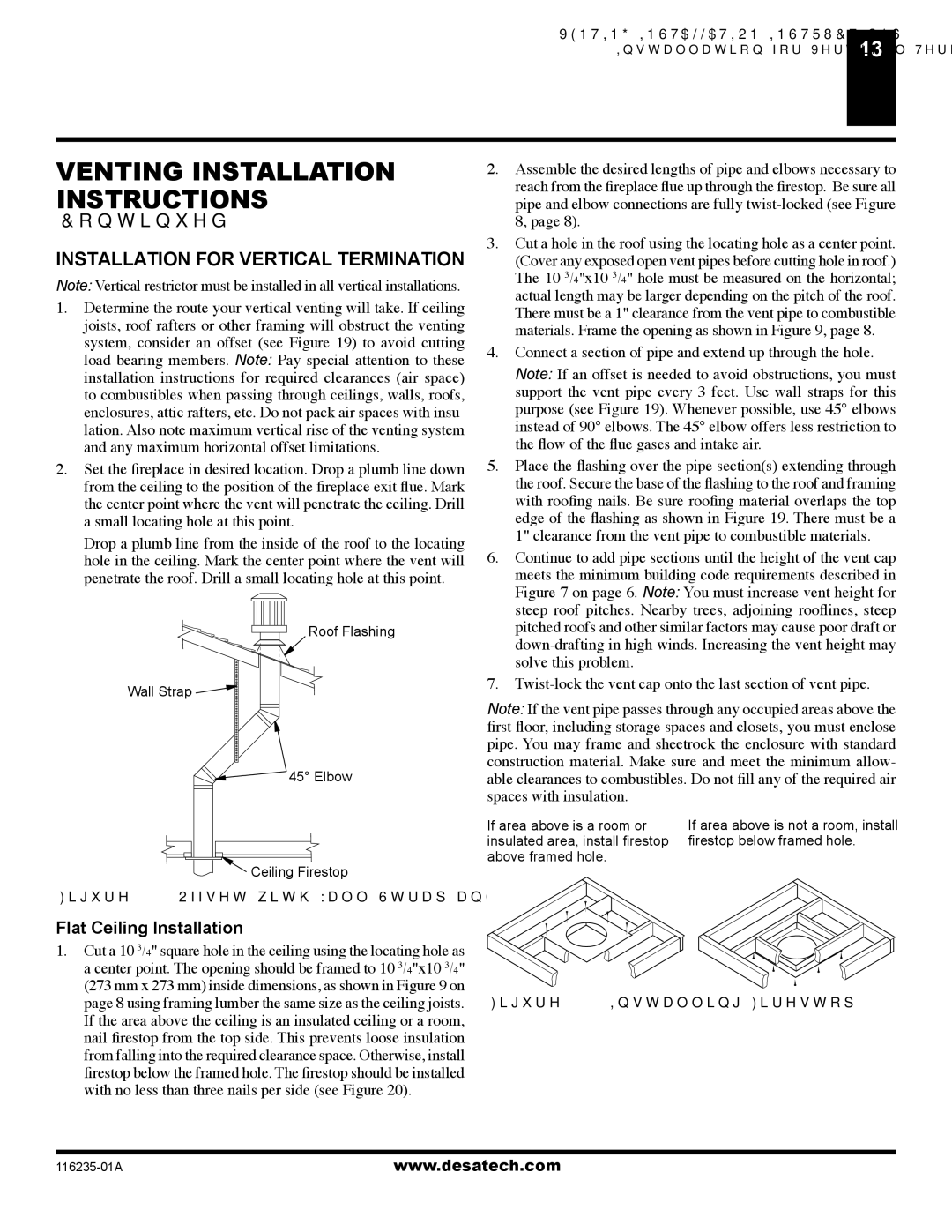(V)VC36NE Series specifications
The Desa (V)VC36NE Series is a revolutionary heating solution designed for both residential and commercial application. This series combines advanced technologies with user-friendly features, making it a versatile option for consumers looking for reliable and efficient heating solutions.One of the standout features of the VC36NE Series is its high-efficiency heating capabilities. Utilizing cutting-edge technology, this series achieves energy efficiency ratings that surpass traditional heating systems. This means that users can enjoy a comfortable indoor environment while significantly reducing their energy consumption and costs.
Another key characteristic of the VC36NE Series is its compact design. The sleek and modern aesthetics allow it to blend seamlessly into various interior designs while occupying minimal space. This makes it ideal for smaller homes or apartments where every square inch counts. The unit's lightweight construction also allows for easy installation, which can be completed by professionals or even handy homeowners.
The Desa VC36NE Series is equipped with advanced control features that provide users with full command over their heating system. A digital thermostat ensures accurate temperature regulation, allowing users to set their desired comfort level with precision. Additionally, the unit includes programmable settings, giving users the ability to create customized heating schedules tailored to their lifestyle.
Safety is paramount in the design of the VC36NE Series. It incorporates multiple safety features, including overheat protection and flame failure devices, ensuring peace of mind while the unit is in operation. This makes it a suitable option for families with children or pets.
In terms of modernization, the VC36NE Series often integrates smart technology, allowing users to connect the heating system to their smartphones or smart home networks. This feature enables remote control of heating schedules from anywhere, enhancing convenience and energy management.
Durability is another hallmark of the Desa VC36NE Series. Constructed with high-quality materials, the unit is designed to withstand the rigors of daily use over long periods. This robust construction ensures that users receive a reliable heating solution that will serve them for years to come.
In conclusion, the Desa (V)VC36NE Series stands out for its efficiency, compact design, advanced controls, safety features, connectivity, and durability. It is an exemplary choice for anyone seeking a modern heating solution that meets both performance and aesthetic requirements.

